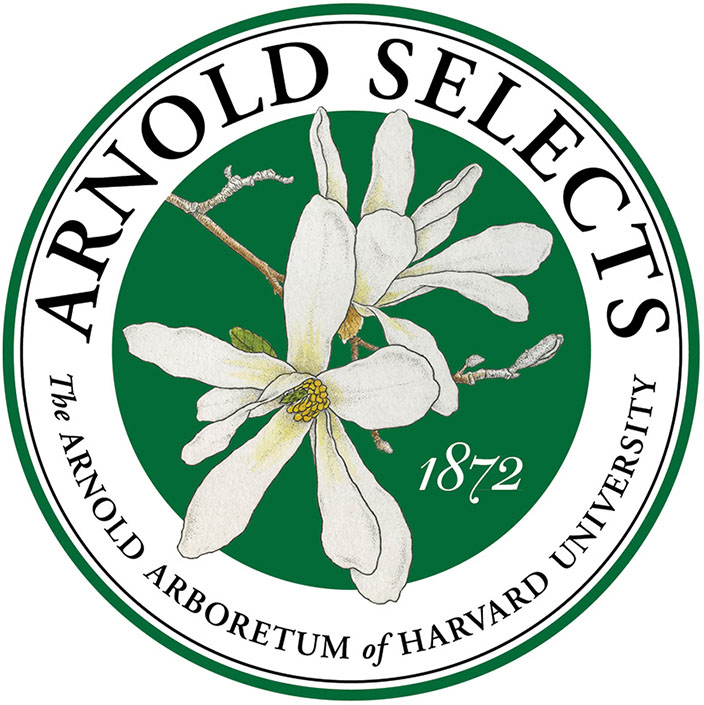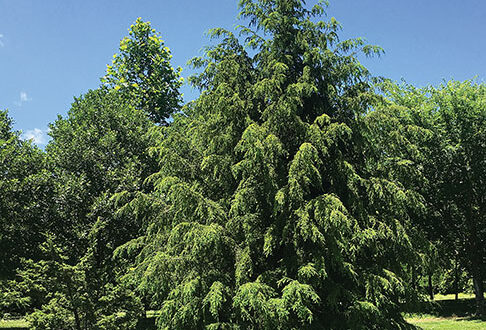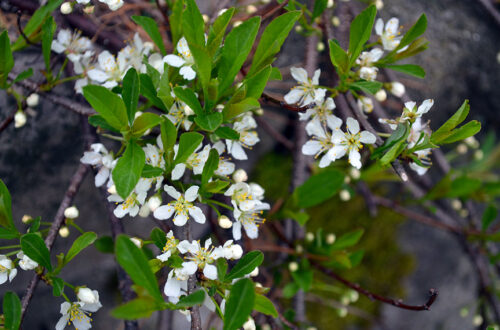By Will Rowlands
The Arnold Arboretum’s plant introduction program (Arnold Selects) started in 2021 saying, “Our model is to provide this unique material to nursery partners for propagation, along with cultural information and backstories, so that a new audience can feel a personal connection to what is growing in their gardens.”
Their introduction for 2024 is Cercis canadensis ‘Arnold Banner,’ an Eastern redbud that began as a spontaneous white-flowering mutation on a sport (branch) on a tree in the Arboretum’s collection in May 2009. It was first noticed by Abby Meyer (nee Hird), then an Arboretum Putnam Fellow.
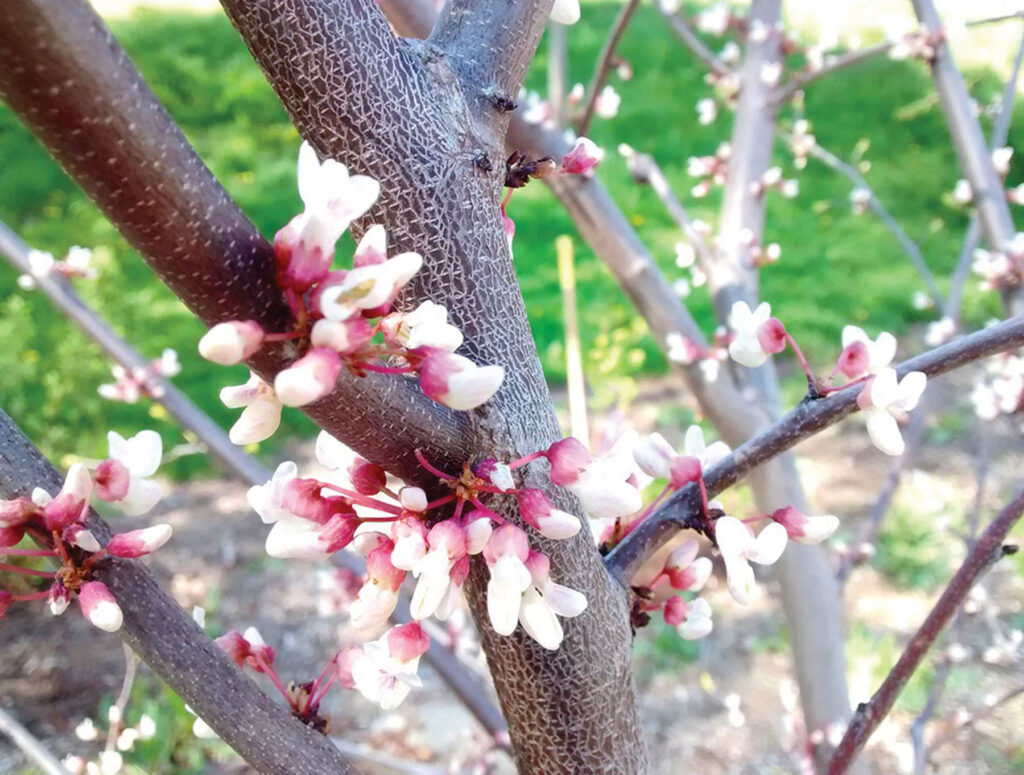
Cauliflory: flowers emerge directly from the trunk and older branches.
“Many of the plants that have become superstars in American nurseries are the product of the natural process of mutation, which underpins all evolution,” says Arboretum Director William (Ned) Friedman, Arnold Professor of Organismic and Evolutionary Biology at Harvard University.
Eastern redbuds are found in the Eastern U.S. from Massachusetts to Florida. Arthur Haines, in Flora Nova Angliae, says it’s native to Connecticut, based on a colony found long ago on a traprock ridge in New Haven County.
Except for its white flowers, ‘Arnold Banner’ has the same general features as other redbuds.
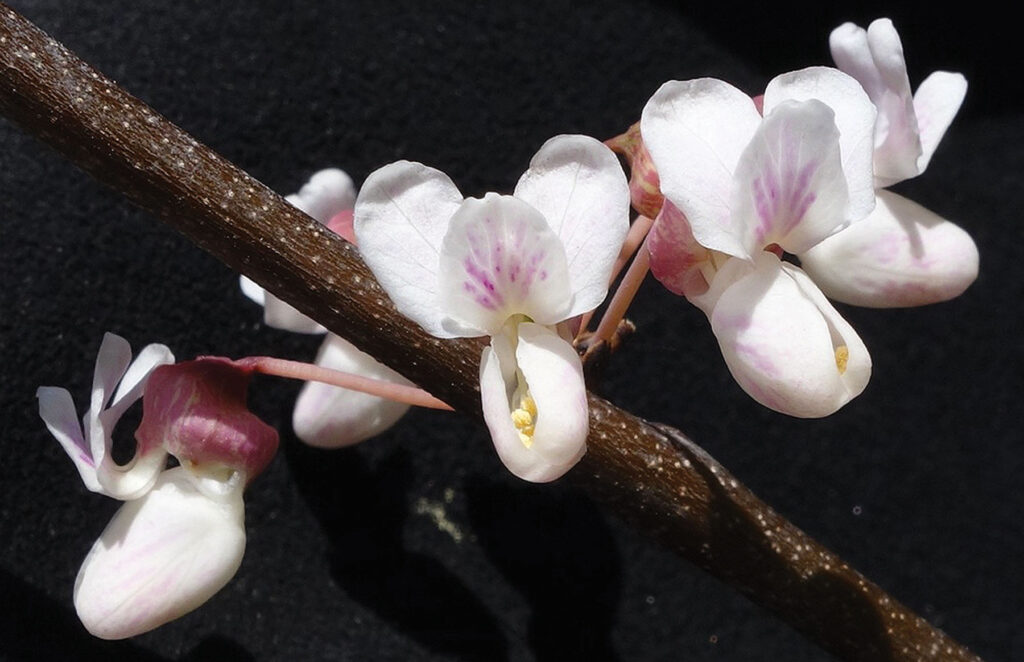
Like a lighted runway, the nectar guides lead bees to the nectar.
Its flowers emerge directly from the trunk and older branches rather than from new growth or shoots, a phenomenon known as cauliflory. It is rare in temperate regions, but many tropical trees are cauliflorous.
What makes ‘Arnold Banner’ different is the color of its flowers. They’re predominantly white and have magenta stripes (known as nectar guides) on the banner or standard petal. It is believed the markings guide bees to the nectar. See photo.
A smallish tree, it grows to about 20 feet tall and 15 feet wide. It’s hardy in zones 4B to 9A. According to the Arnold Arboretum, redbuds grow well in full sun in the northern part of its range. Best growth occurs in a light, rich, moist soil but they adapt well to a variety of soil including sandy or alkaline. Larger specimens may not transplant well. The tree is somewhat short-lived and may decline after 20 years or so.
According to Kenneth R. Robertson writing in Arnoldia (Vol. 36, Issue 2), Eastern redbud and flowering dogwood (Cornus florida) have similar geographical distributions and often occur together.
George Washington reportedly planted redbuds in Mt. Vernon and Thomas Jefferson is said to have used them at Monticello and Poplar Forest, his personal retreat. Early settlers apparently used the flowers in salads.
The alternate heart-shaped leaves are 3-5 inches long and emerge after flowering. The attractive leaves emerge a reddish color, turn dark green in summer and bright yellow in the fall.
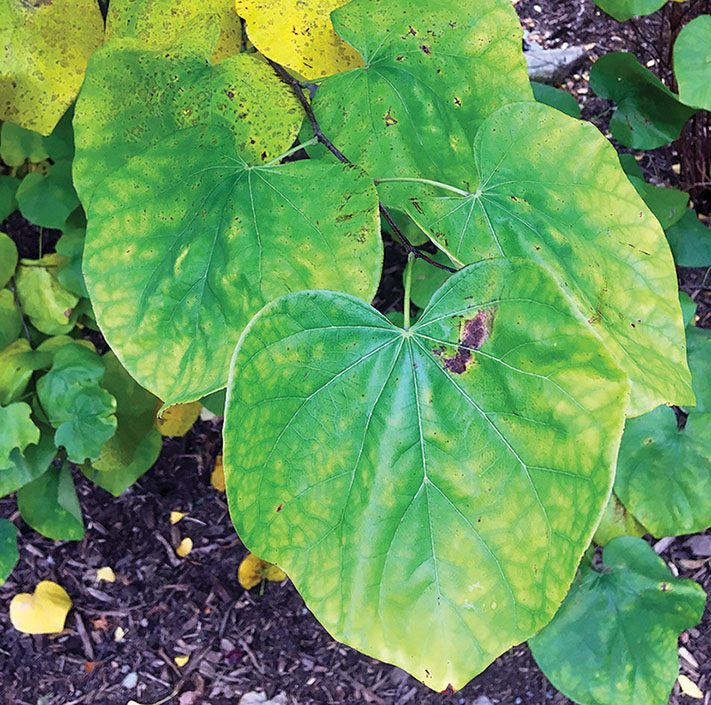
Eastern redbud has 3-5 inch leaves.
It’s an early bloomer. Michael Dirr, in Dirr’s Hardy Trees and Shrubs, says it’s “A treasure in the March-April landscape, when its clustered magenta buds unfold a blanket of rosy pink. No equal, no competitor, can be found among small flowering landscape trees – the stage is reserved for this native species.”
According to the Missouri Botanical Garden, “The flowers provide an early-season nectar source for hummingbirds. The seeds and flower buds are eaten by songbirds. Caterpillars and other insects which feed on redbuds are also a source of food for birds.”
Arnold Selects Introductions
2021
• Acer rubrum ‘Schlesingeri’ (Red Maple)
• Abies koreana ‘Prostrate Beauty’
(Korean Fir)
2022
• Prunus pumila var. depressa ‘Gus Mehlquist’ (Sprawling Sand Cherry)
• Viburnum bracteatum ‘Crimson Gem’ (Bracted Viburnum)
2023
• Ilex glabra Forever Emerald™ (Inkberry)
originally Ilex glabra ‘Peggy’s Cove’
2024
• Cercis canadensis ‘Arnold Banner’
(Eastern Redbud)
